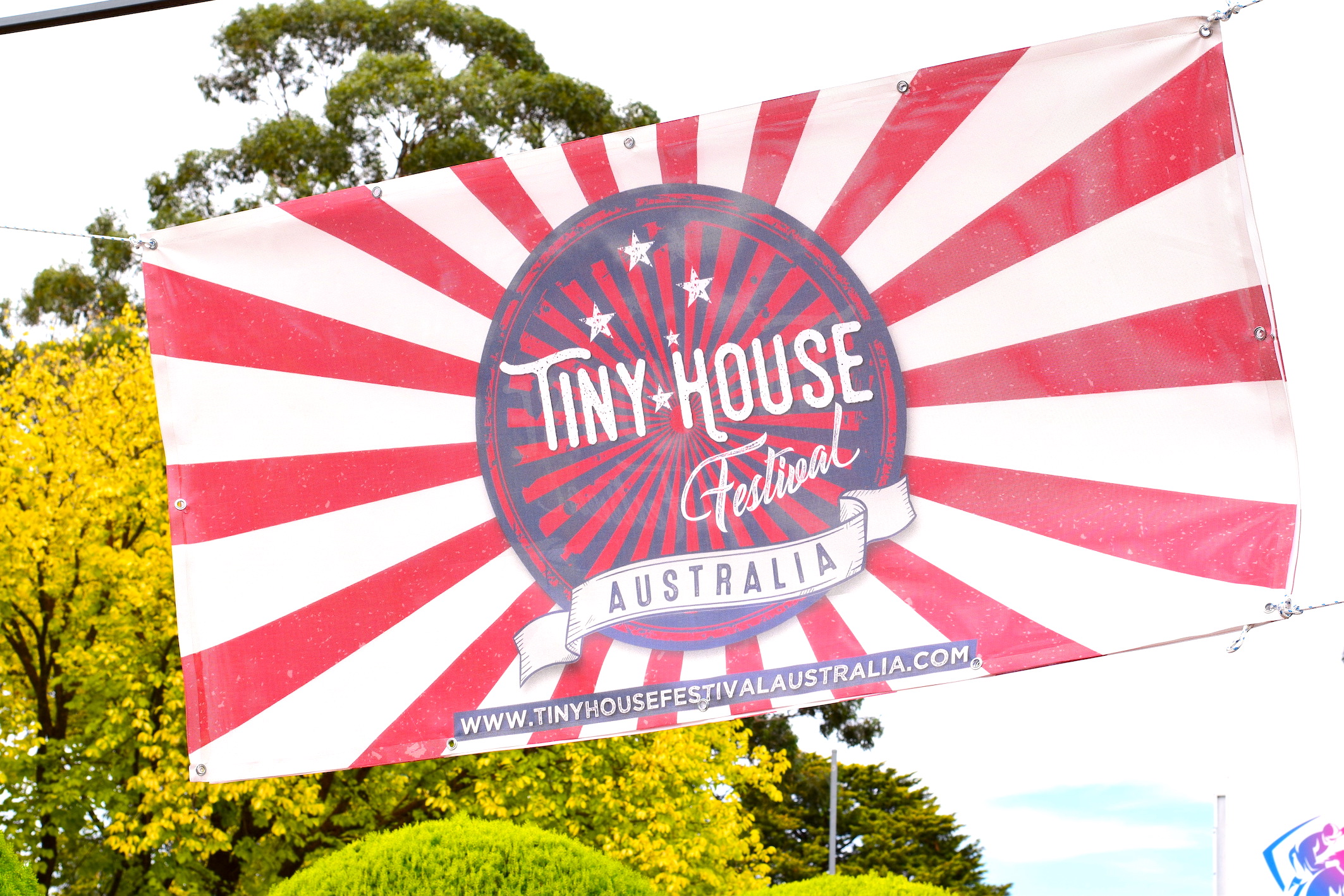
©︎Yuki Soma
Australia’s first Tinyhouse festival was held on March 23rd and 24th, 2019!
I actually participated in it, and it was much more interesting than I expected.
In this article, I introduce the festival based on the current situation of Tiny House in Australia.
※This article is two pages long.
Tiny house movement in Australia
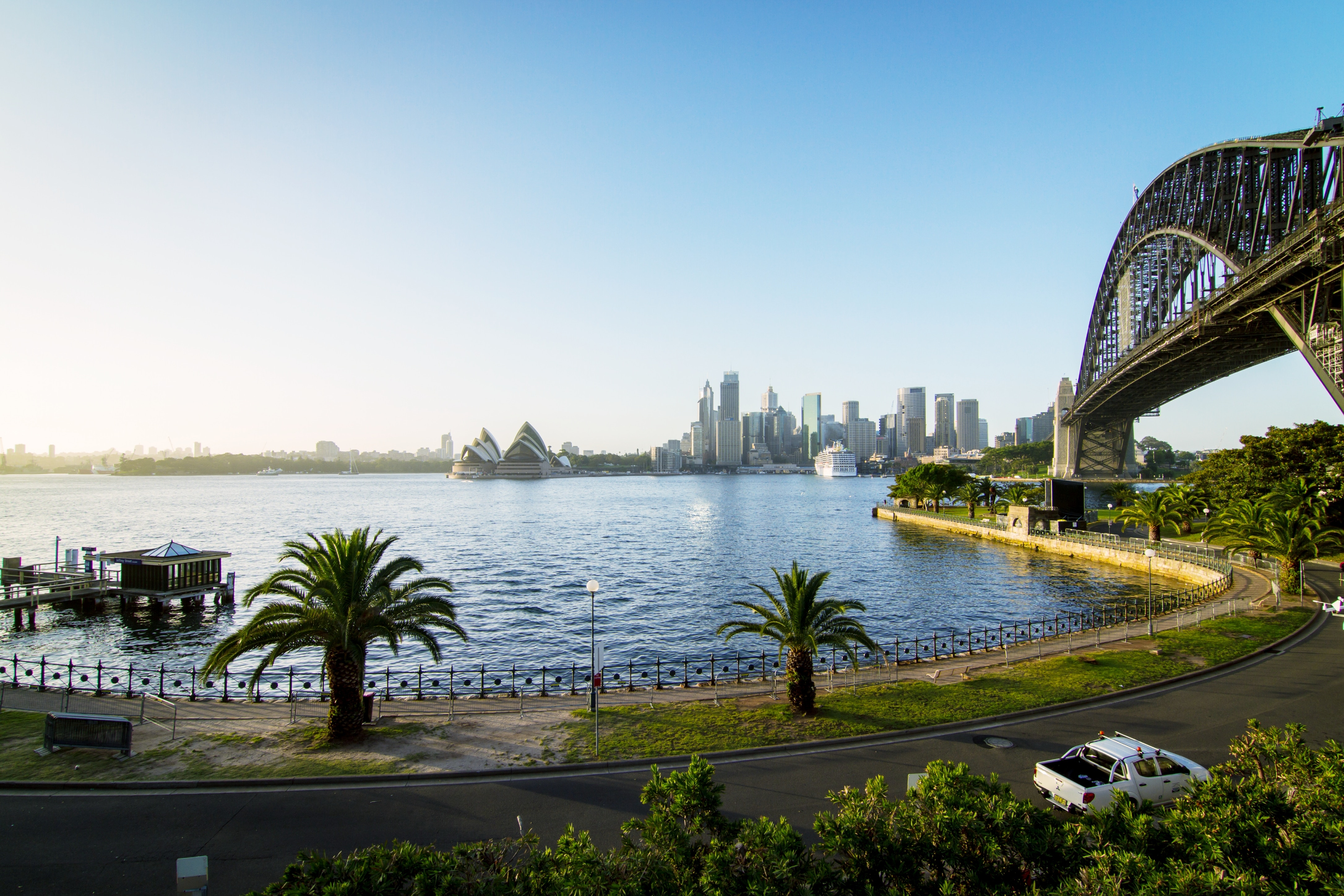
Photo by Holger Link
Australia is a rich natural country in the southern hemisphere, about 10 hours by plane from Japan.
The national land is more than 20 times as large as Japan, and the population is about 1/5 of Japan, so you may have an image that the population density is lower than Japan.
However, due to the high temperature and arid climate of inland areas, more than 80% of the population is concentrated in the fertile coastal areas, which account for only about 1% of the country. Urban areas such as Sydney and Melbourne are experiencing high house rents.
Australians are said to have an average AU $475,000 on mortgages, while Tiny House costs about AU$10,000~50,000 for DIY, AU$50,000〜100,000 for ready-made.
In recent years, Tiny Houses have been attracting attention for their comfort and mobility without the need for expensive loans, and it is estimated that there are currently at least 300 Tiny Houses in Australia.
※The exact number of Tiny House in AU is not known, so in fact there may be hundreds more.
Australia is gradually experiencing the Tiny House movement.
And this year, for the first time ever, the Tiny House Festival was held.
Festival overview and program
First, I will introduce the outline of the festival.
The event was held from March 23 to 24, 2019 (Saturday and Sunday) in Bendigo, a city of about 140,000 people, just over 2 hours by train from Melbourne.

The fountain symbolizes Bendigo. The historic streets are beautiful.©︎Yuki Soma
Participation fee is AU $40 for 1 day ticket and AU $25 for 2 day ticket.
If you take a special class of Dee Williams or Bryce Langston, AU $39 will be charged separately. (* 1 AU $= 79 yen)
The program is divided into areas, and participants mainly choose what they like from outdoor stages (Workshops and talk events), screening (Movie), lectures (lecture), etc.

Program on Saturday, 23rd
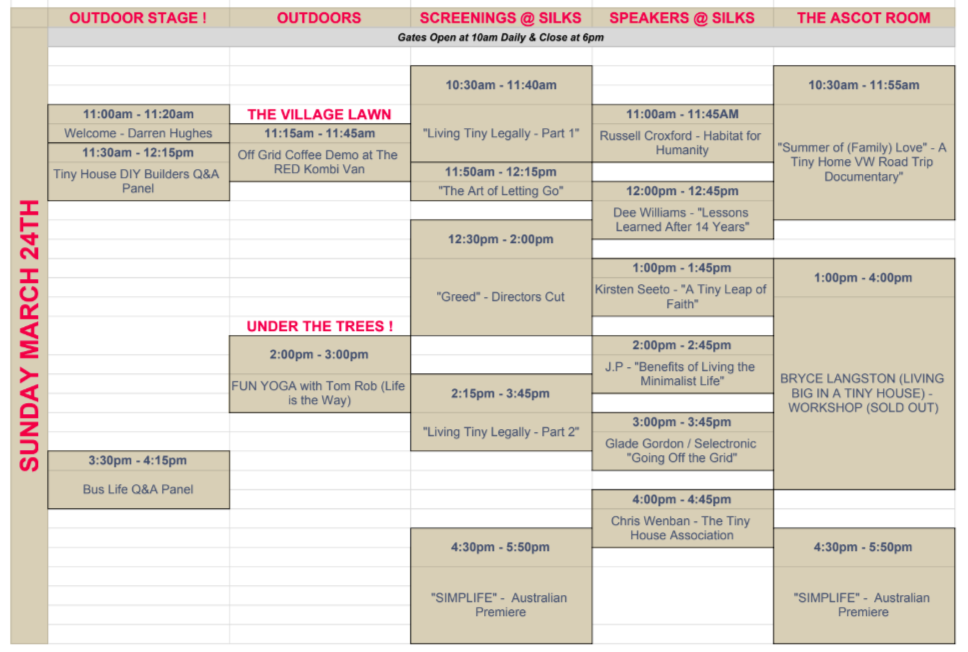
Program on Sunday, 24th
There are a lot of programs like “Tinyhouse dwellers Q&A panel”, “Tinyhouse builders Q&A panel”, “Off-grid coffee Demo”, “Reusing & West reduction”, etc.
If something you are interested in is held at the same time, you have to choose one of them. Hmmm…
Experience camper Vans and Tiny House!
The highlight of the festival is the Tiny House experience!
There is no time limit, so you can experience them during the gap time of each program.
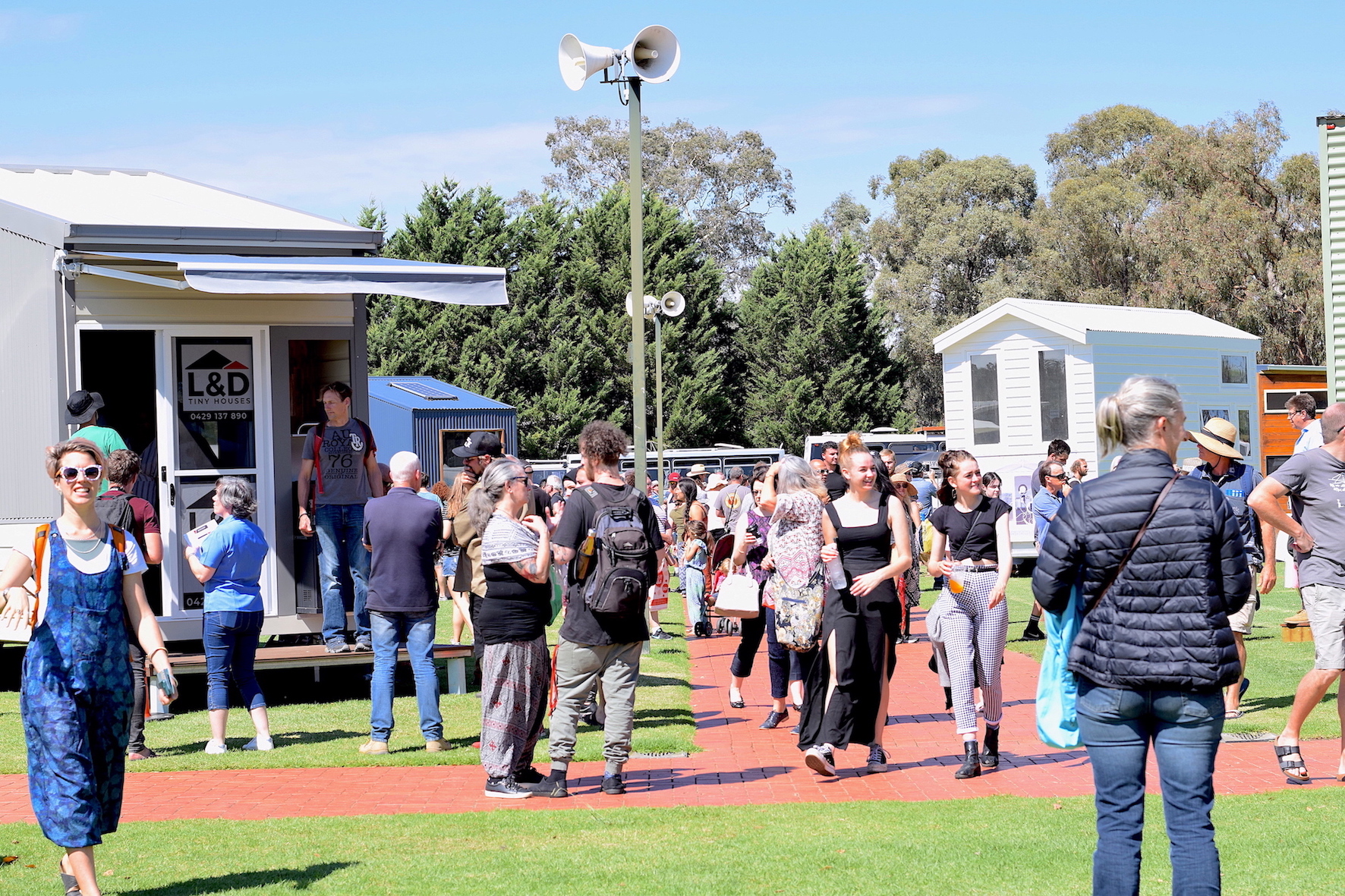
©️Yuki Soma
A lot of people and Tiny Houses!
It was crowded with people from all over Australia, ranging in age from couples in their twenties to senior.
More than 30 Tiny Houses and Campers are on display, with about 70% made by DIY and the remaining 30% ready-made.
Camper Vans were the most common.
Camper Vans are large vans renovated to create a living space. Traveling and living there is called “Van Life”.
It is focused on “Move” rather than size and comfort, so they have minimal plumbing and other equipment. The toilet is a simple flush for a compost toilet or a camping car, the shower is a tank type, and the electricity is a solar panel, so it is necessarily off grid.
Therefore, rather than living on campers 100%, I had the impression that many people make good use of RV parks (campsite) and public facilities.
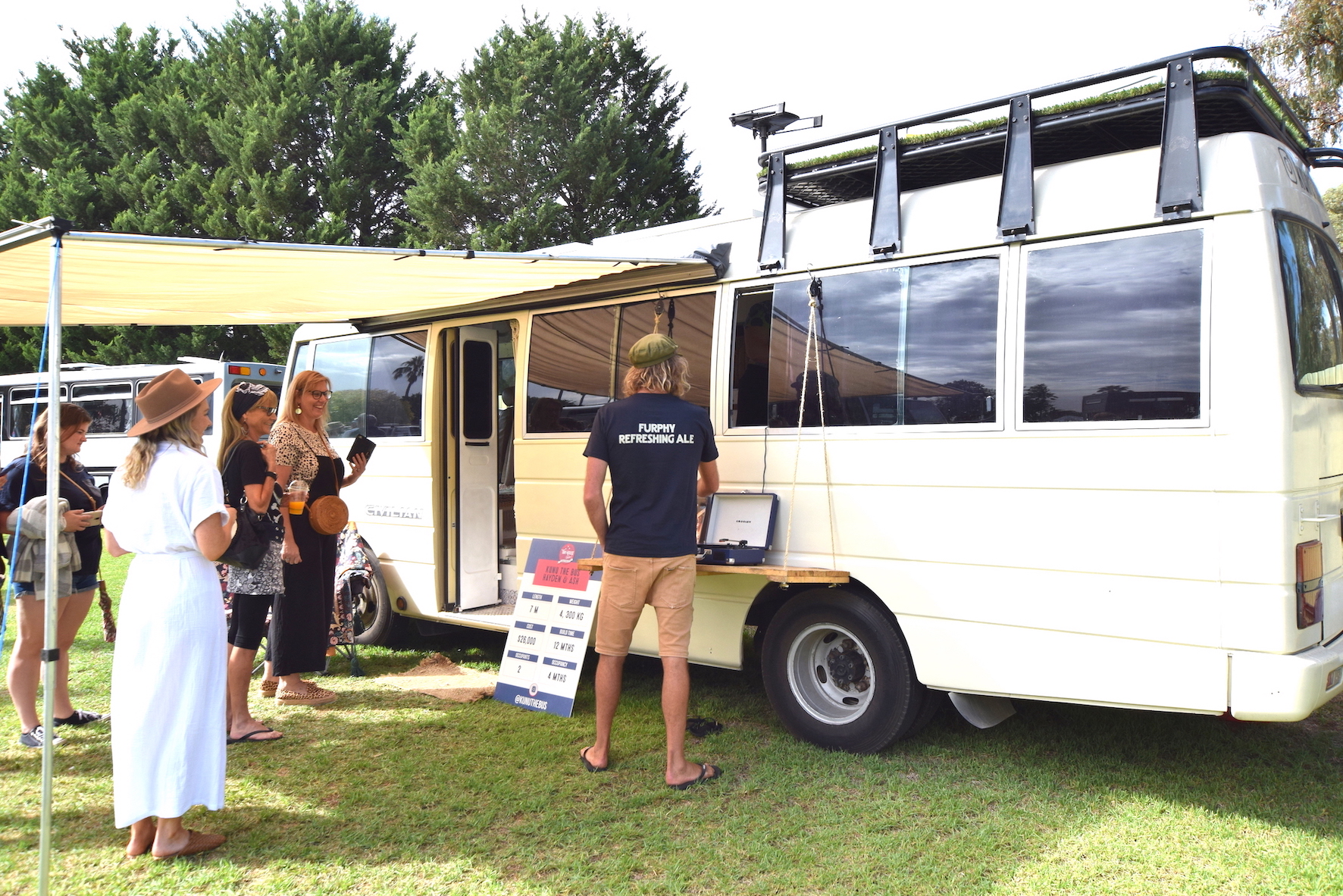
The balcony with lawn looks great!.©︎Yuki Soma
The owner of this camper is a young couple in their 20s and a newborn baby.
AU $26,000, 12 months to renovate the bus.
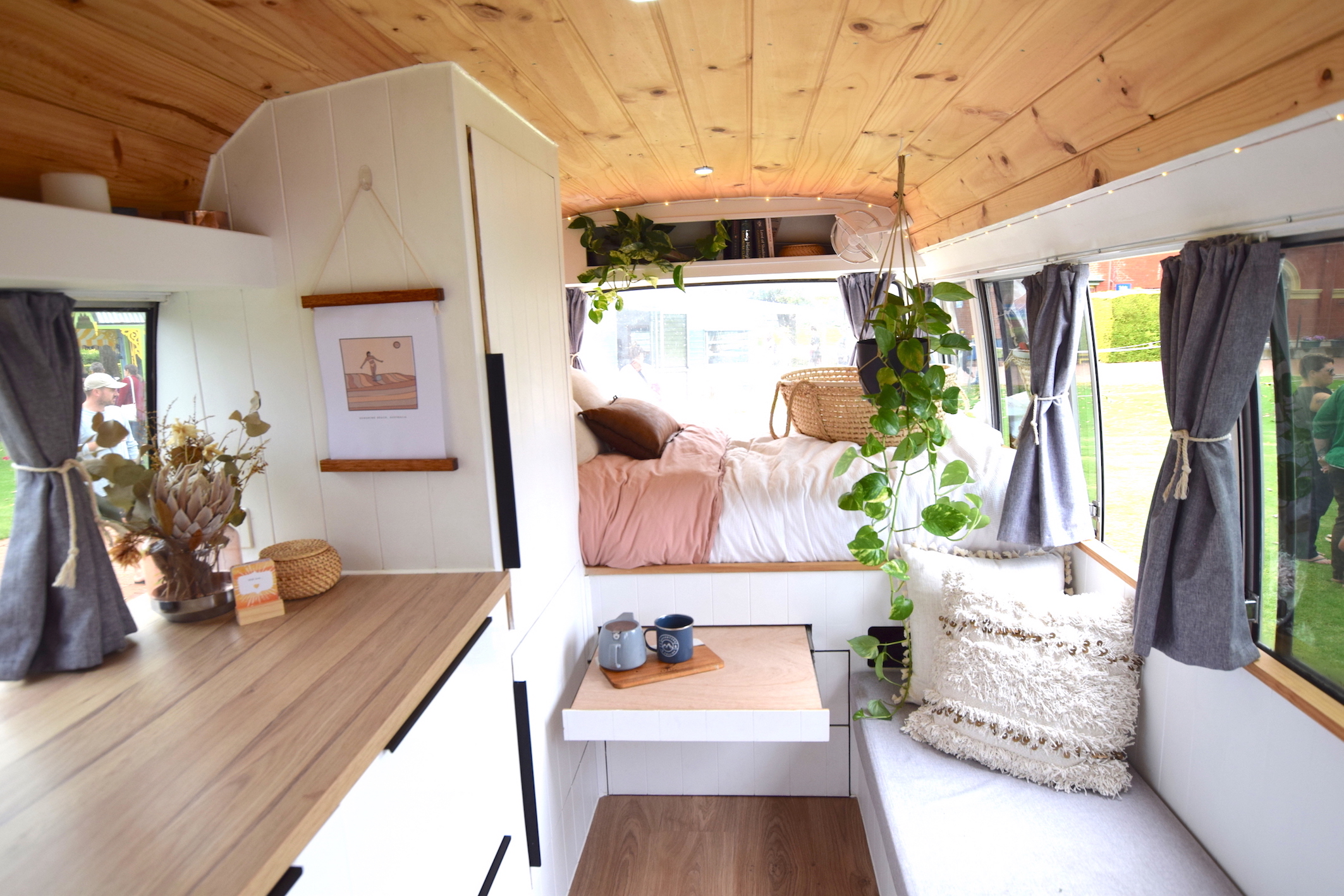
Gentle color interior©︎Yuki Soma
There is just a space for sleeping, so it is very simple.
The gentle green interior is very cute!

The school bus is cute!©︎Yuki Soma
The camper, a refurbished school bus, cost AU $18,000, just 4 months to renovate.
A couple and a cat are the owners.
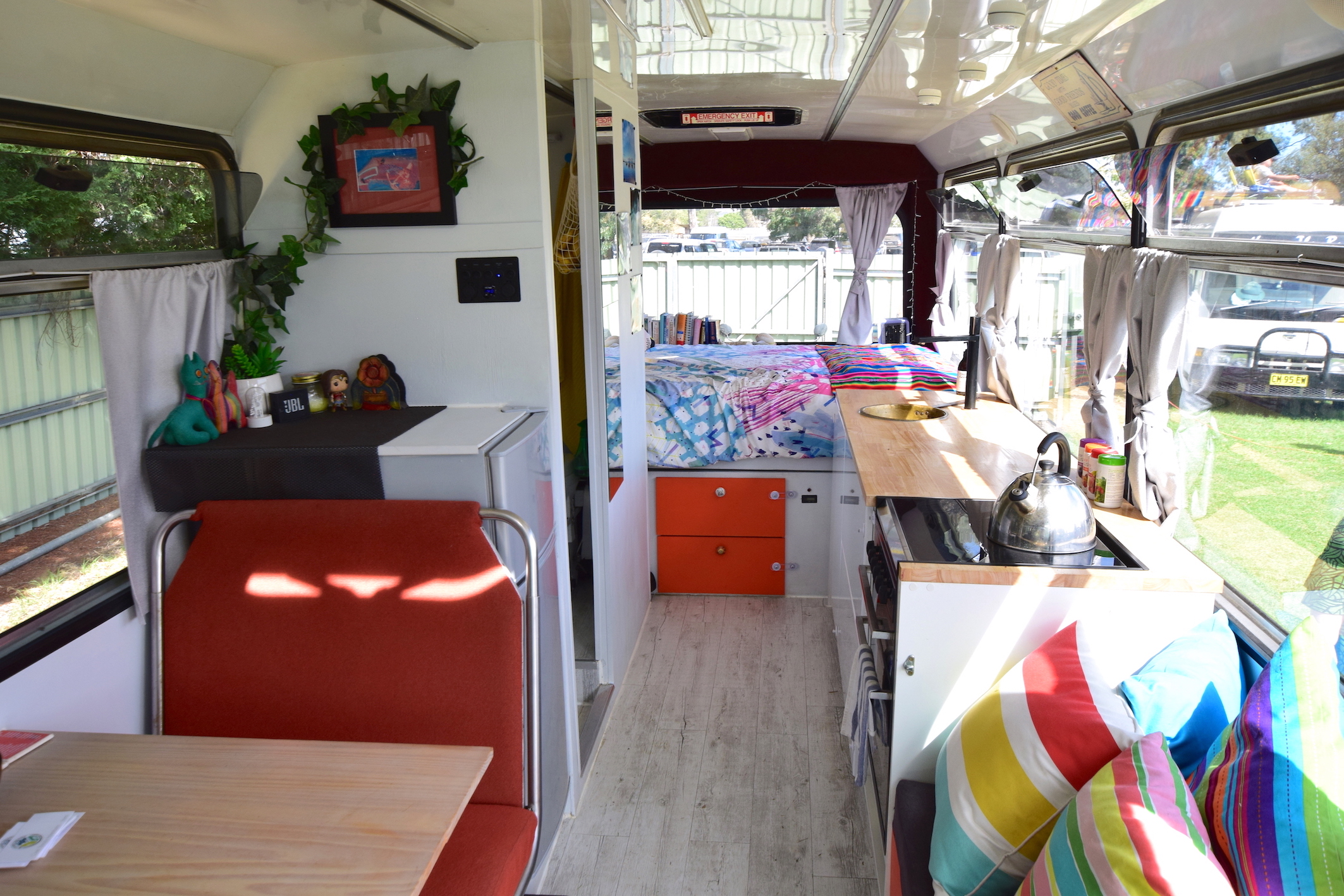
Bright interior with large windows©︎Yuki Soma
Though without a shower, there are compost toilet, an IH stove using solar power, and a refrigerator, so it won’t be inconvenient for general life.

The popular Tiny House has a long line!©︎Yuki Soma
There are also Tiny Houses on wheels.
They were popular with a long line because there were fewer than Vans. There is often a line of nearly 30 minutes for getting inside.
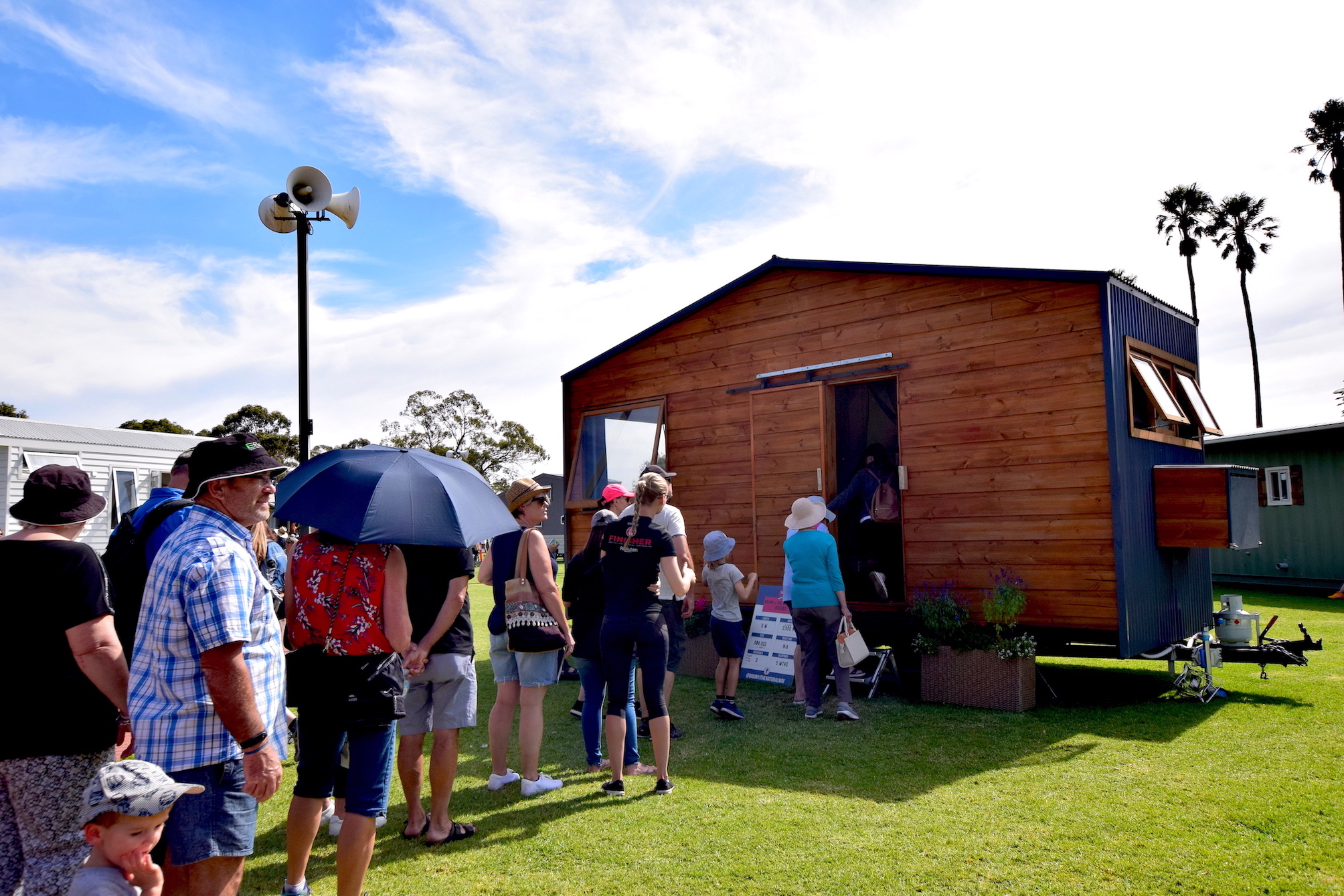
Tiny house made of wood and galvanic steel.©︎Yuki Soma

The room is surprisingly spacious!©︎Yuki Soma
In this Tiny House, the bedroom, living room, kitchen, toilet, and shower were compactly placed in a room of only about 13 m2.
The toilet and shower, which are not shown in the picture, are the same type of household with water and electricity.
As I mentioned before in this article, the room layout with the entrance on the side and the swing from side to side is characterized by high space efficiency.
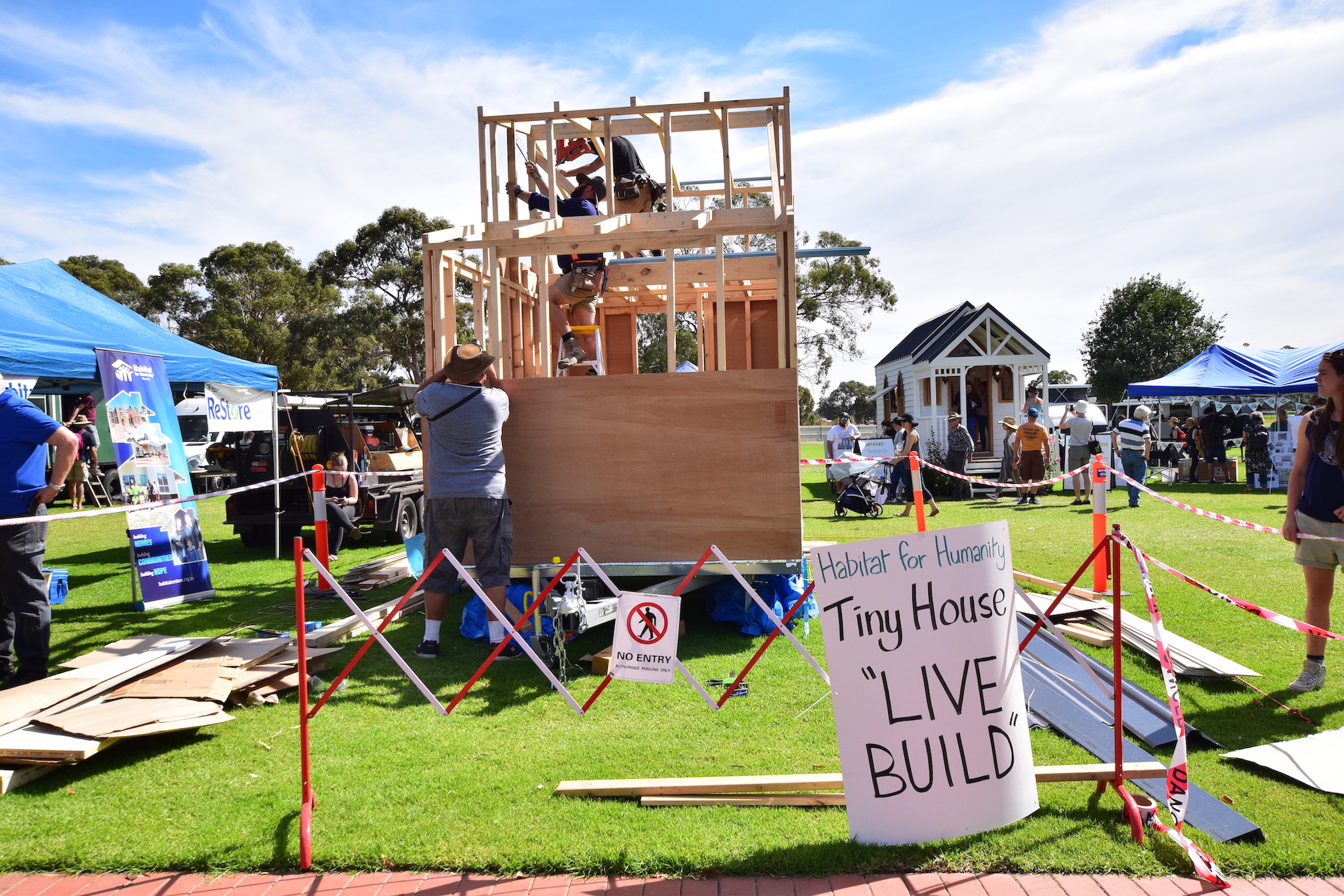
It is very impressive to see how it is getting done!©︎Yuki Soma
Live building in the center of the venue!
One Tiny House will be completed during the two-day Tiny House Festival.
The photo shows the morning of the second day. I couldn’t stay until the end, so I couldn’t see it until it was completed…!

If you look closely, the stage is a trailer!©︎Yuki Soma
This is a talk event on the outdoor stage.
People who actually built and lived in Tiny House talk about how they came to live in Tiny House and how they lived a real life.
“Tiny House taught me that life is not just about work. Life in a busy society was like riding a train that you couldn’t get off. I needed a bit of courage, but my life became very rich when I chose to step down.”
The woman who started living in Tiny House told me about the changes that had happened.
Things, the size of the house, the complex relationships and the work are all downsized.
It’s just that, but it’s totally changed the way she works and lives, and now she is living a much richer life with about 17 hours of work per week.


